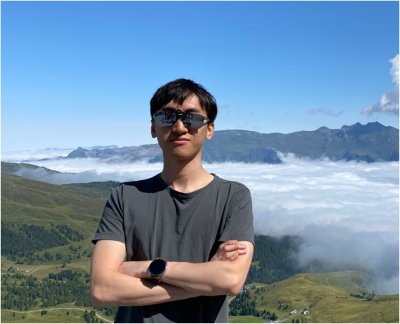Dye-sensitized photocathodes: Materials and interfacial photodynamics
Kaijian Zhu is a PhD student in the department Photocatalytic Synthesis. Supervisors are prof.dr. G. Mul and dr.ir. J.M. Huijser from the faculty of Science & Technology.
 The performance of a tandem DSPEC cell is hampered by the low efficiency of the photocathode. Various strategies have been proposed in order to enhance the performance. The primary limitation is that the chemical reaction occurs significantly slower than charge recombination between the NiO and the dye-catalyst assembly. Therefore, it is important to further develop fundamental insight, and based on that adjust the photocathode design.
The performance of a tandem DSPEC cell is hampered by the low efficiency of the photocathode. Various strategies have been proposed in order to enhance the performance. The primary limitation is that the chemical reaction occurs significantly slower than charge recombination between the NiO and the dye-catalyst assembly. Therefore, it is important to further develop fundamental insight, and based on that adjust the photocathode design.
In Chapter 2, the experimental details including sample preparation and characterization are described. In addition, the principles behind femtosecond transient absorption and time-resolved photoluminescence spectroscopy used for mechanistic studies are discussed.
In Chapter 3, the effect of Cu-doping of NiO on the photodynamics and performance is explored. It turns out that Cu-doping can slow down surface charge recombination and enhance the photocurrent of the P1 dye-sensitized photocathode. This work highlights that the nature of the NiO surface plays an important role in improving the efficiency.
In Chapter 4, the photodynamics of P1-sensitized NiO in different working environments is studied. Both fast hole injection as well as fast charge recombination are observed when the photocathode is exposed to an aqueous or humid environment. We assign this to a dual role of surface OH- on the NiO, accelerating both light-induced hole injection and recombination, highlighting the importance of balancing the quantity of surface OH-.
In Chapter 5, the photodynamics of P1-sensitized NiO in aqueous electrolyte under different external potentials is investigated by time-resolved photoluminescence and femtosecond transient absorption. At more negative potential, charge recombination is slowed down, analogous to literature.91 However, hole injection appears to also be slowed down instead of being promoted. We assign this to compositional changes (H+ and OH‑) in the electrochemical double layer induced by the external bias, which is in agreement with the dual function of OH- as described in Chapter 4.
In the research described in Chapter 6, myristic acid with a long hydrophobic alkyl chain and a carboxylic acid anchoring group is co-adsorbed on the NiO surface with the aim to decrease the fast charge recombination between de P1 dye and NiO. In addition to control over the surface hydroxylation, the long alkyl chains also provide an apolar environment to the P1 dye molecules and inhibit the molecular twisting after photoexcitation, which appears to drive H2 evolution from water without additional catalyst.
In Chapter 7, the preparation and analysis of a film of a new p-type material, CuBO2, is described. The properties of the obtained CuBO2 film are sensitive to the precursor solution and annealing conditions. The CuBO2-based photocathode shows significantly slow charge recombination compared with the NiO-based analogue.




